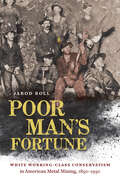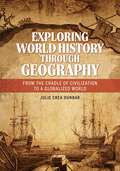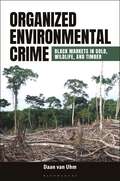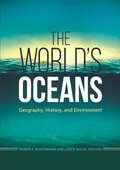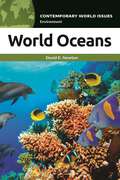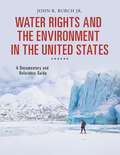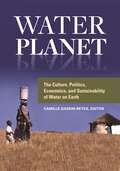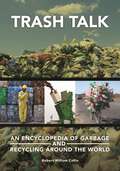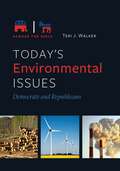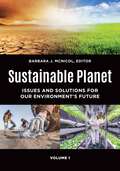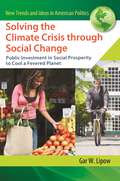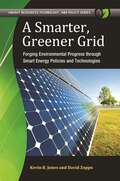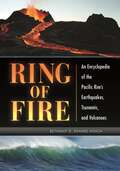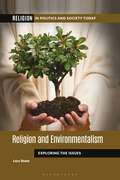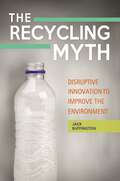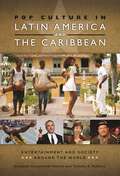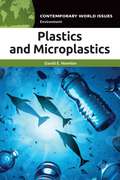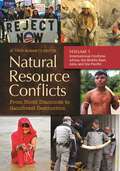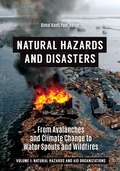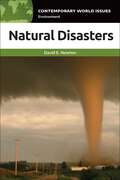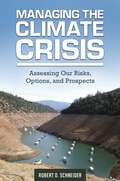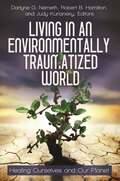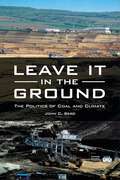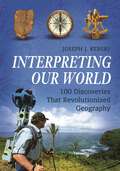- Table View
- List View
Poor Man's Fortune: White Working-Class Conservatism in American Metal Mining, 1850–1950
by Jarod RollWhite working-class conservatives have played a decisive role in American history, particularly in their opposition to social justice movements, radical critiques of capitalism, and government help for the poor and sick. While this pattern is largely seen as a post-1960s development, Poor Man's Fortune tells a different story, excavating the long history of white working-class conservatism in the century from the Civil War to World War II. With a close study of metal miners in the Tri-State district of Kansas, Missouri, and Oklahoma, Jarod Roll reveals why successive generations of white, native-born men willingly and repeatedly opposed labor unions and government-led health and safety reforms, even during the New Deal. With painstaking research, Roll shows how the miners' choices reflected a deep-seated, durable belief that hard-working American white men could prosper under capitalism, and exposes the grim costs of this view for these men and their communities, for organized labor, and for political movements seeking a more just and secure society. Roll's story shows how American inequalities are in part the result of a white working-class conservative tradition driven by grassroots assertions of racial, gendered, and national privilege.
Exploring World History through Geography: From the Cradle of Civilization to a Globalized World
by Julie Crea DunbarExploring World History through Geography: From the Cradle of Civilization to a Globalized World takes readers on a fascinating and unique journey through time from many of the earliest world civilizations right into the 21st century.From the early civilizations of ancient Mesopotamia to our present-day globalized society, readers will learn how humans interacted-and still interact-with the environment around them, as well as the environment's role in not only shaping the society's world view but enabling the building of socially stratified and successful civilizations. Not your run-of-the-mill world history tome, this book examines world history through the closely related discipline of geography.The civilizations and events represented in the book, while not exhaustive, were selected to highlight geographic themes and areas of study. Upon completing the book, readers should have a firm understanding of the expansive, cross-curricular study of geography-from the study of world cultures and history to politics to the environment and Earth's physical processes. In addition, they will have a new understanding of the relevance of geography to not only human history but contemporary events, as well as their day-to-day lives. By presenting this history from a slightly different, geographic point of view, Exploring World History through Geography will inspire fresh curiosity in the world, both past and present.
Organized Environmental Crime: Black Markets in Gold, Wildlife, and Timber
by Daan van UhmDeveloping an innovative approach to understanding how organized crime groups diversify into the illegal trade in natural resources, this book looks at the convergence between environmental crime and other serious crimes.In Organized Environmental Crime, Daan van Uhm breaks new ground by rejecting the classic image of organized crime as specializing in one kind of criminal activity. Instead, he develops an innovative approach to understanding how organized crime groups diversify into the illegal trade in natural resources by looking at the convergence between environmental crime and other serious crimes. Personal stories from informants directly involved in organized crime networks offer unique insights into the black markets in gold, wildlife, and timber in three environmental crime hotspots: the Darién Gap, a remote swath of jungle on the Colombia-Panama border in Latin America; the Golden Triangle, a notorious opium epicenter in Southeast Asia; and the eastern edge of the Congo basin, an important conflict area in Central Africa. The proliferation of organized environmental crime exacerbates the global destruction of ancient rainforests; the mass extinction of species; and the pollution of the atmosphere, land, and water, negatively affecting planet Earth. By uncovering its incentives, features, and harms, this book is crucial to understanding organized environmental crime in a rapidly changing world.
The World's Oceans: Geography, History, and Environment
by Rainer F. Buschmann and Lance NoldeThis single-volume resource explores the five major oceans of the world, addressing current issues such as sea rise and climate change and explaining the significance of the oceans from historical, geographic, and cultural perspectives.The World's Oceans: Geography, History, and Environment is a one-stop resource that describes in-depth the Arctic, Atlantic, Indian, Pacific, and Southern Oceans and identifies their importance, today and throughout history. Essays address the subject areas of oceans and seas in world culture, fishing and shipping industries through history, ocean exploration, and climate change and oceans. The book also presents dozens of entries covering a breadth of topics on human culture, the environment, history, and current issues as they relate to the oceans and ocean life. Sample entries provide detailed information on topics such as the Bermuda Triangle, Coral Reefs, the Great Pacific Garbage Patch, Ice Melt, Myths and Legends, Piracy, and Whaling. Contributions to the work come from top researchers in the fields of history and maritime studies, including Paul D'Arcy, John Gillis, Tom Hoogervorst, Michael North, and Lincoln Paine. The volume highlights the numerous ways in which Earth's oceans have influenced culture and society, from the earliest seafaring civilizations to the future of the planet.
World Oceans: A Reference Handbook (Contemporary World Issues)
by David E. NewtonWorld Oceans: A Reference Handbook offers an in-depth discussion of the world's oceans. It discusses the marine life that is dependent on the sea as well as the problems threatening the health of the ocean and its wildlife.World Oceans: A Reference Handbook opens with an overview of the history of human knowledge and understanding of the oceans and cryosphere, along with related scientific, technological, social, political, and other factors. The second chapter presents and discusses about a dozen major problems facing the Earth's oceans today, along with possible solutions. The third chapter provides interested individuals with an opportunity to express their thoughts and ideas on today's ocean issues, and remaining chapters provide additional resources, such as a bibliography, a chronology, and a glossary, to assist the reader in her or his further study of the issue.Where most books for young adults learning about world oceans take a purely expository treatment, this book provides readers with additional information as well as resources, allowing them to learn more and inform further study of the subject.
Water Rights and the Environment in the United States: A Documentary and Reference Guide (Documentary and Reference Guides)
by John R. Jr.This sweeping study traces the development of water policy in the United States from the 19th century to the present day, exploring the role of legislation in appropriating access to water to the American people.Three factors influence the development of water policy and politics in the United States: the availability of water, the manner in which people use the commodity to its maximum economic benefit, and governmental control. This book is a one-stop resource for understanding the scope of water issues in America, from governing doctrine and legislation, to Native American water rights, to water protection and pollution, and to the mitigation of natural and manmade disasters. Distinguished author and noted scholar John R. Burch Jr. reviews the conflicts among state, federal, and international agencies in dealing with water supply and points to competing legal rulings and laws as undermining the creation of a cohesive policy for all. Through an analysis of key documents, Burch examines the recent calamities befalling the American water system—including droughts, oil spills, and natural disasters—and considers the future of water distribution to the American people. Organized into six parts, sections include doctrines and rights, waters of the West, border regions water management and flood control, environmental issues, and water supply and safety.
Water Planet: The Culture, Politics, Economics, and Sustainability of Water on Earth
by Camille Gaskin-Reyes, EditorThrough case studies, opposing viewpoints, and primary documents, this reference work examines the environmental and sustainability issues regarding water as well as how water is an intrinsic part of human culture.Every culture and ecosystem on earth depends on water. As the world's climate changes, human culture is increasingly threatened by the seemingly opposite problems of having too little clean, potable water and "having too much water"—e.g., flooding, melting polar ice caps, and rising sea levels. What are the solutions that humanity must collectively pursue to protect our ability to flourish on planet earth?Water Planet: The Culture, Politics, Economics, and Sustainability of Water on Earth offers an unprecedented examination of the critical subject of water sustainability. Its essays, viewpoints, case studies, and documents show how this vital resource that many in first-world countries take for granted is intricately woven into not only basic human survival but also cultural, political, and economic stability. Readers will learn about topics such as flooding and drought; the growing problem of water pollution; the connections between water and gender, including gender equity and gender aspects of water ownership; the effects of global temperature changes on the water supply; concerns regarding fishing and overfishing; water security; and sustainable water management.
Trash Talk: An Encyclopedia of Garbage and Recycling around the World
by Robert William CollinThis fascinating reference offers a unique take on recycling and trash, tracing the role of waste in public health, climate change, and sustainability around the world.As the popularity of sustainability grows and climate change becomes an accepted reality, experts point to trash and waste as the link between environmental and public health. This detailed reference—one of the most comprehensive resources available on the subject—examines garbage disposal on a global level, from the history of waste management, to the rise of green movements and recycling programs, to the environmental problems caused by incineration and overflowing landfills. According to urban planning scholar Robert William Collin, accounting for waste will improve the chances for environmental protection, public health, and sustainability. This country-by-country guide studies waste management practices and related topics from around the world, including garbage strikes in Italy, successful recycling programs in Switzerland, trash in the streets of India, and the garbage patch floating in the Pacific Ocean. Country entries cover a brief history of garbage disposal, current methods of removal, recycling, and waste management problems specific to the region. Additional content addresses air and water pollution, greenhouse gas emissions, E-waste, and hazardous and nuclear wastes.
Today's Environmental Issues: Democrats and Republicans (Across the Aisle)
by Teri J. WalkerAn accessible and impartial survey of the positions of the Republican and Democratic parties on the most pressing environmental issues of our time, from climate change and wilderness preservation to air and water pollution.Today's Environmental Issues: Democrats and Republicans presents a unique perspective on party politics—one that impartially identifies similarities and differences regarding an array of topics ranging from fracking, sustainability, and pesticides to logging and noise pollution. Essays provide both historical information and up-to-date coverage of partisan opinions on today's environmental concerns. Written for upper level high school students, undergraduates, and general audiences interested in environmental issues and partisan viewpoints, this book enables readers to better understand the origins, details, differences, and commonalities of partisan opinions surrounding today's environmental concerns.Each environmental issue is unique with its own set of concerns and impacts, particularly when viewed from a party perspective. By examining a breadth of issues from the party viewpoint, readers can understand how the parties could work together or in opposition, depending on the environmental issue—and that the parties may not always be polar opposites on every issue, a characterization that is often portrayed in the media. Each essay includes a sidebar that presents a quick look at the party line, individuals who have shaped opinion or policy, or key court decisions.
Sustainable Planet [2 volumes]: Issues and Solutions for Our Environment's Future [2 volumes]
by Barbara J. McNicolSustainable Planet is a two-volume resource that provides comprehensive coverage on the world's most pressing environmental issues, their impact in countries around the world, and how—or if—they are being addressed.Sustainable Planet: Issues and Solutions for Our Environment's Future examines contemporary challenges to sustainability, including population, climate change, decreasing biodiversity, land degradation, and water quality. Each chapter analyzes one of these challenges by first providing an introduction to the topic as well as key concepts to provide readers with a basic understanding of the issue. Essays deepen comprehension by investigating different aspects of the challenge.Case studies written by experts in the field follow. Each case study considers how a specific country is affected by the particular issue as well as the measures the country is taking to find solutions that will provide for a more sustainable future. The final chapter of the book explores sustainability at a global level by examining, through annotated primary documents, a number of multinational initiatives and alliances intended to create a more sustainable planet.
Solving the Climate Crisis through Social Change: Public Investment in Social Prosperity to Cool a Fevered Planet (New Trends and Ideas in American Politics)
by Gar W. LipowThis book presents an accessible and easy-to-follow argument that the climate crisis is a side effect of inequality and injustice, and demonstrates how strategies such as large-scale social investment will prove far more effective in reducing greenhouse gas pollution than cap-and-trade or other forms of free-market environmentalism.Solving the Climate Crisis through Social Change: Public Investment in Social Prosperity to Cool a Fevered Planet offers a new approach to battling the climate crisis, arguing that the massive waste that caused the current environmental crisis resulted not only from fundamental structural flaws in markets but also from social inequality, lack of democracy, and a deeply flawed foreign policy. Rather than providing the typical doomsday perspective, it offers realistic optimism about the expanding climate crisis, highlighting the convergence between the necessary steps to save the planet and what needs to be done to improve the lives of Americans.The author's discussion of the United States's role in the climate crisis spans subjects as varied as the 17th-century forests of New England, the evolution of housework over 200 years, the American addiction to the automobile, the lettuce fields of California in the 1970s, and the Guano wars in 19th-century Bolivia, Chile, and Peru. This book will appeal to a wide range of readers, from the interested general public to students, academics, professionals, and other experts. The main section presents a clear and accessible survey of the economic, social, and political causes of the climate crisis, accompanied by potential solutions, while extensive appendixes offer in-depth and technical discussions.
A Smarter, Greener Grid: Forging Environmental Progress through Smart Energy Policies and Technologies (Energy Resources, Technology, and Policy)
by Kevin B. Jones David ZoppoThe pressing need for a smarter and greener grid is obvious, but how this goal should be achieved is much less clear. This book clearly defines the environmental promise of the smart grid and describes the policies necessary for fully achieving the environmental benefits of the digital energy revolution.The United States' electrical grid is an antique. It was built to serve a 20th-century economy and designed in an era when the negative environmental impacts of electricity production were poorly understood. It must be upgraded and modernized. The proposed solution is a "smart grid"—a network of new digital technologies, equipment, and controls that can respond quickly to the public's changing energy needs by facilitating two-way communication between the utility and consumers. This book explains the environmental benefit of a smart grid, examines case studies of existing smart grids, and identifies the legal and regulatory policy hurdles that must be overcome to fully realize the smart grid's benefits.Based on six diverse organizations' experience as "early adopters" in the digital energy revolution, the authors explore how a smart electric grid offers real promise for supercharging energy efficiency, democratizing demand response, electrifying transportation, preparing for ubiquitous distributed clean energy technologies, and automating the distribution system. Against the backdrop of climate change and continuing economic uncertainty, setting a path for environmental improvement and upgrading our electric grid with new digital technologies and associated smart policies is more critical than ever before.
Ring of Fire: An Encyclopedia of the Pacific Rim's Earthquakes, Tsunamis, and Volcanoes
by Bethany D. HingaThe author examines natural disasters around the Pacific Rim throughout history together with scientific data context to produce enlightening—and highly readable—entries.On March 11, 2011, a magnitude 9.0 earthquake struck off Japan's coast, triggering a powerful tsunami. The massive destruction that resulted proved that not even sophisticated, industrialized nations are immune from nature's fury. Written to take some of the mystery out of the earth's behavior, this encyclopedia chronicles major natural disasters that have occurred around the Pacific Rim, an area nicknamed the "Ring of Fire" because of the volatile earth that lies above and below. The encyclopedia offers descriptions of deadly earthquakes, volcanic eruptions, and tsunamis through time. The entries provide in-depth information that promotes an understanding of the structure of the earth and earth processes and shares the insights of scientists whose work helps clarify the causes and effects of these cataclysmic events. At the same time, the work examines how the people and cultures of the Pacific Rim view this active part of the earth, how they live with the threat of disaster, and how they have been affected by major events that have occurred. Readers will come away with a holistic view of what is known, how this knowledge was gained, and what its implications may be.
Religion and Environmentalism: Exploring the Issues (Religion in Politics and Society Today)
by Lora StoneA foundational resource for readers investigating religiously motivated environmentalism, this book provides both a global overview of the subject and a detailed discussion of key figures, concepts, organizations, events, and documents.Beginning in the late 1960s, a growing number of activists, scholars, and scientists asserted that traditional religions had been major contributors to the environmental crisis. In response, theologians, religious organizations, and religiously motivated activists became increasingly involved in environmental issues. At the same time, emerging nature-based belief systems emphasized values and lifestyles based in environmentalism. More recently, religiously motivated environmentalism has become a powerful force in shaping environmental policy and human action globally and has joined with secular environmentalism to address related issues. This book explores the background and current state of religious environmentalism. The book begins with an overview essay examining the history and context of religious environmentalism and its significance today. A chronology then profiles the most important events related to religious environmentalism. A section of more than 50 alphabetically arranged reference entries follows, with each entry providing objective information about people, places, events, movements, works, and other topics. The entries include cross-references and suggestions for further reading, and the book closes with a selected, annotated bibliography of major works.
The Recycling Myth: Disruptive Innovation to Improve the Environment
by Jack BuffingtonThis book states the harsh truth: that despite best intentions, our current environmental practices are doing more harm than good, and that the solution lies in creating supply chains of the future that design, produce, consume, and reuse materials in a manner that is balanced economically and environmentally.One billion beverage containers are used on a daily basis in the United States, with at least 600 million of them ending up in landfills. Even the 400 million that are recycled—at a great cost—are not accomplishing the task of helping the environment. This economic and environmental catastrophe cannot be solved by recycling programs. From his experience as a leader in the American consumer beverage industry and a researcher in Sweden, author Jack Buffington has developed a transformational solution that seeks to not just mitigate the environmental damage but jumpstart the economy while actually achieving zero waste.The Recycling Myth tells the story of how our current environmental practices are unintentionally doing more harm than good and how we need to create a radically different supply chain of the future that must, as best as possible, copy the natural system of growth, decay, and regrowth, and discontinue a disastrous pattern of material design and use. Backed by irrefutable evidence, the book destroys our comfortable notions of the recycling status quo; explains why recycling will never work in the United States, despite decades of attempts; and introduces a new system that will actually work—without asking consumers to consume less.
Pop Culture in Latin America and the Caribbean (Entertainment and Society around the World)
by Elizabeth Gackstetter Nichols Timothy R. Ph.D.This insightful book introduces the most important trends, people, events, and products of popular culture in Latin America and the Caribbean.In recent times, Latin American influences have permeated American culture through music, movies, television, and literature. This sweeping volume serves as a ready-reference guide to pop culture in Central America, South America, and the Caribbean, focusing on Mexico, Brazil, Venezuela, Argentina, Haiti, Cuba, the Dominican Republic, Jamaica, and Costa Rica, among other areas. The work encourages hands-on engagement with the popular culture in these places, making such suggestions as Brazilian films to rent or where to find Venezuelan music on the Internet.To start, the book covers various perspectives and issues of these regions, including the influence of the United States, how the idea of machismo reflects on the portrayal of women in these societies, and the representation of Latino-Caribo cultures in film and other mediums. Entries cover key trends, people, events, and products from the beginning of the 20th century to the present day. Each section gives detailed information and profound insights into some of the more academic—and often controversial—debates on the subject, while the inclusion of the Internet, social media, and video games make the book timely and relevant.
Plastics and Microplastics: A Reference Handbook (Contemporary World Issues)
by David E. NewtonPlastic plays a vital role in today's world but has become increasingly problematic. Plastics and Microplastics: A Reference Handbook discusses the history and evolution of plastic and its many uses, both in the United States and around the world.Beginning with a history of plastic—from the first scientific discovery of the material to its diversity of forms and uses in the present day—Plastics and Microplastics: A Reference Handbook discusses the history and evolution of plastic and its many uses, both in the United States and around the world. Importantly, it delves into the problems and controversies concerning plastic and microplastics, such as the pollution of oceans, rivers, and streams; its exceptionally long shelf life; its contribution to air pollution; and ingestion of microplastics by marine life.One of the most valuable aspects of the book is its survey of the history of plastics and microplastics conducted in a manner that helps readers to identify key issues to address. Moreover, it discusses both implemented and proposed solutions. A perspectives chapter includes a broad range of voices, allowing crucial, diverse perspectives to round out the author's expertise.
Natural Resource Conflicts [2 volumes]: From Blood Diamonds to Rainforest Destruction [2 volumes]
by M. Troy BurnettNatural resource and environmental conflicts have long been issues confronting human societies. This case-based examination of a wide range of natural resource disputes exposes readers to many contemporary examples that offer reasons for both hope and concern.The Rwandan genocide, the Sudanese civil war, and perpetual instability in the Middle East and Africa: each of these crises have arguably been instigated and maintained by natural resource disputes. China has undertaken a Herculean task to plant hundreds of millions of trees along its margins in an effort to save Beijing from crippling dust storms and halt the expansion of the Gobi desert. Will it work, and is it worth it? These and many other cases of conflict stemming from natural resource or environmental concerns are explained and debated in this up-to-date examination of contemporary and ongoing topics. The book examines conflicts over precious resources and minerals, such as diamonds, oil, water, and fisheries, as well as the pursuit of lesser-known minerals like Coltan and other "rare earth elements"—important resources in our technological age—in remote locations such as Greenland and the Congo. Each topic contains an overview and two position essays from different authors, thereby providing the reader with highly informative and balanced perspectives. Reference entries accompany each topic as well, helping students to better understand each issue. As the world hurtles into the 21st century, these natural resource issues are becoming increasingly important, with all global citizens having a significant stake in how these conflicts arise and play out.
Natural Hazards and Disasters [2 volumes]: From Avalanches and Climate Change to Water Spouts and Wildfires [2 volumes]
by Bimal Kanti PaulThis two-volume encyclopedia provides the science behind such heart-pumping geophysical hazards as volcanic eruptions, earthquakes, cyclones, and floods, as well as authoritative entries on notable natural disasters around the world and the agencies that help those they impact.Natural Hazards and Disasters explores the sometimes harsh effects of nature on human life. The set discusses the physical science behind specific types of hazards and disasters (such as blizzards and tsunamis), their impact on our lives, how damage is mitigated or prevented, recovery and reconstruction, and the current research and technology used for managing or even eliminating the hazards.Written by experts in the field, the set also explores a variety of extreme events from around the world, including the 2010–2011 Christchurch Earthquakes (New Zealand), the 2017–2018 Thomas Fire (United States), and the 2018 Kerala Floods (India). Also covered are the world's major international and nonprofit aid agencies, like the Salvation Army and Oxfam, that assist disaster victims.
Natural Disasters: A Reference Handbook (Contemporary World Issues)
by David E. NewtonThis book provides a detailed introduction to natural disasters and the ways in which they have had and continue to have, profound effects on human society.Natural Disasters: A Reference Handbook surveys the impact of these events on human civilization. The opening chapter provides a general history and background of the major types of natural disasters, including earthquakes, volcanic eruptions, severe storms, and forest fires. The information presented in this introduction allows the reader to better understand current issues, problems, and solutions related to natural disasters discussed in subsequent chapters.The book covers the role of natural disasters in human life from earliest recorded history (and, to some extent, even earlier) to the present day. It provides an extensive variety of resources that encourage readers to learn more about the topics discussed. The book is intended for readers in the late middle school to high school age range, as well as adults who may have a special interest in the subject.
Managing the Climate Crisis: Assessing Our Risks, Options, and Prospects
by Robert O. SchneiderUsing a risk management approach to tease apart the complex issue of climate change, this book assesses the key vulnerabilities and redirects the discussion to present a comprehensive plan to overhaul our response to climate change.According to the 2014 U.S. Climate Report, temperatures might increase by 5 degrees even with aggressive strategies to reduce greenhouse gas emissions and could increase by as much as 10 degrees if emissions continue unabated. The report also predicts increases in extreme weather caused by global warming will continue. It is time to apply the lessons of sustainable disaster mitigation and hazard resilience to respond to the challenges posed by global warming, identify and assess the options we have for addressing the crisis, and create a practical plan for managing the problem.Unlike other books on climate change, this one uniquely applies a risk management approach to answer the question, "Considering what our policies look like now, what do we need to do next to mitigate climate change?" Robert O. Schneider, PhD, explains how the warming climate will affect everything from peak temperatures and weather extremes to infrastructure such as groundwater reservoirs, airports, and wastewater systems, making the dire nature of the crisis clear to readers in practical and personal terms. By enabling readers to understand the scientific and historical contexts of the climate crisis, the author makes a compelling case for the urgency of implementing a national climate policy to respond to the challenges posed by global warming.
Living in an Environmentally Traumatized World: Healing Ourselves and Our Planet (Practical and Applied Psychology)
by Darlyne G. Nemeth Robert B. Hamilton Judy Kuriansky João Lucilio Ruegger de Albuquerque Gloria Alvernaz Mulcahy Robert A. Muller Donald F. Nemeth Anna T. Onishi Yasuo Onishi Alexander P. Steger L. Taighlor Whittington Susan ZelinskiThis book follows environmental changes—including those caused by human actions, as well as those resulting from natural circumstances—and provides a process to manage their impact on the future.Whenever environmental damages are caused by natural or human-made events, there are long-term effects for people. This eye-opening and unprecedented book explains the ongoing turmoil in the environment, while presenting ways to alleviate its effect on humankind's physical and mental health. Living in an Environmentally Traumatized World: Healing Ourselves and Our Planet discusses recent environmental events and examines the reasons why the resulting changes are inevitable. The authors assert that people experience six universal stages when they suffer from environmental trauma: shock, survivor mode, basic needs, awareness of loss, spin and fraud, and resolution. The book presents coping strategies for navigating negative ecological shifts, and provides a plan of action for responsibly managing our environment. Additionally, profiles of indigenous people who endure under environmental adversity provide real world examples of survival.
Living Green: Your Questions Answered (Q&A Health Guides)
by Amy Hackney BlackwellThis book makes "green living," as it relates to teens and young adults, an approachable subject. The information and resources it comprises make it valuable for anyone who is interested in living a more sustainable and environmentally friendly life.Our actions have a powerful impact on the environment: how we heat and cool our homes, the types of cars we drive, and even the foods we consume all contribute to the health of the planet. Living Green: Your Questions Answered, an installment in Greenwood's Q&A Health Guides series, provides clear, concise answers to readers' questions about living a more eco-conscious life. In addition to explaining fundamental concepts such as carbon footprint, climate change, and sustainability, this book offers practical steps readers can take in their everyday lives to reduce their environmental impact across a number of areas, including energy usage, transportation, food and water, and even fashion and personal care products.Each book in this series follows a reader-friendly question-and-answer format that anticipates readers' needs and concerns. Prevalent myths and misconceptions are identified and dispelled, and a collection of case studies illustrates key concepts and issues through relatable stories and insightful recommendations. The book also includes a section on health literacy, equipping teens and young adults with practical tools and strategies for finding, evaluating, and using credible sources of health information both on and off the internet—important skills that contribute to a lifetime of healthy decision-making.
Leave It in the Ground: The Politics of Coal and Climate
by John C. BergEmploying scientific explanations and hard data, this book shows why coal is such a problem, how the pro-coal forces got to be so powerful, and how those forces might be defeated through political activism.Coal provided the energy to build modern civilization. This energy source raised standards of living, multiplied the earth's population, and enabled people in developed countries to enjoy leisure time. Today, we know that if we burn all the coal available, climate change will continue to increase. But the use of coal isn't purely an environmental issue; there are also political and economic forces at play. This book examines the politics and environmental impact of coal production and distribution, presenting a clear point of view—that we must shift away from coal use—backed by hard data and supplying specific prescriptions for opposing and regulating the coal industry.Author John C. Berg explains how ending the burning of coal (and of oil and natural gas) is a political problem rather than a technical one; explodes the "clean coal" myth, providing scientific documentation of how burning coal emits more greenhouse gases per unit of energy than any other fuel; and describes how controlling coal use in the United States will also serve to restore the possibility of a meaningful international climate agreement. Additionally, readers will understand the critical importance of activism—from local to international—in spurring government regulation to control the coal industry, which can only be defeated politically.
Interpreting Our World: 100 Discoveries That Revolutionized Geography
by Joseph J. KerskiThis important book demonstrates why geography matters in the modern-day world through its examination of 100 moments throughout history that had a significant impact on the study of geography—literally, "writing about the earth."Geography is not simply accounts of the lands of earth and their features; it's about discovering everything there is to know about our planet. This book shows why geography is of critical importance to our world's 21st-century inhabitants through an exploration of the past and present discoveries that have been made about the earth. It pinpoints 100 moments throughout history that had a significant impact on the study of geography and the understanding of our world, including widely accepted maps of the ancient world, writings and discoveries of key thinkers and philosophers, key exploration events and findings during the Age of Discovery, the foundations of important geographic organizations, and new inventions in digital mapping today.The book begins with a clear explanation of geography as a discipline, a framework, and a way of viewing the world, followed by coverage of each of the 100 discoveries and innovations that provides sufficient background and content for readers to understand each topic. The book concludes with a concise synopsis of why it all matters and a look forward to 10 possible future discoveries in the next 50 years of geography. Students will gain a clear sense of what is truly revolutionary about geography, perhaps challenging their preconceived notion of what geography actually is, and grasp how important discoveries revolutionized not only the past but the present day as well.
